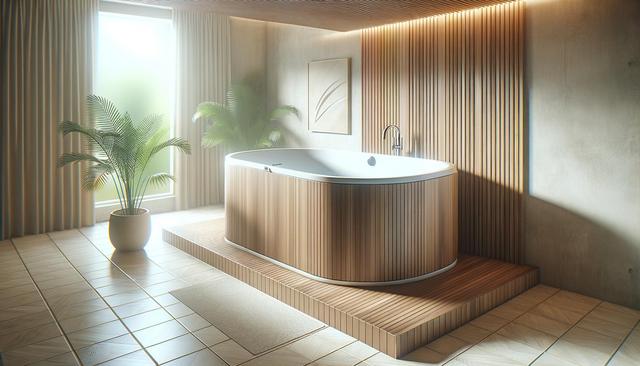Understanding the Design and Functionality of Walk-In Tubs
Walk-in tubs are designed primarily for individuals who face challenges with traditional bathtubs, such as older adults or those with limited mobility. These tubs feature a door that opens either inward or outward, allowing users to step in without having to lift their legs over a high threshold. Once inside, the user can sit on a built-in seat, making bathing safer and more accessible. Most models also include handrails, non-slip floors, and easy-to-reach controls, all of which contribute to a more user-friendly experience.
Walk-in tubs typically fill and drain while the user is seated inside, which is why many include fast-drain technology to minimize wait times. The sealed door ensures that no water escapes once the tub is filled, and many models are equipped with watertight locking mechanisms to prevent leaks. These functional elements make walk-in tubs a practical solution for maintaining hygiene with dignity and ease.
Key Features That Make Walk-In Tubs Appealing
Beyond accessibility, walk-in tubs often come with therapeutic features that enhance their appeal. Many are fitted with hydrotherapy jets, air massage systems, and heated backrests. These features can help relieve sore muscles, improve circulation, and reduce stress. For individuals with arthritis or similar conditions, the warm water and jets can offer a soothing, spa-like experience that supports joint flexibility and comfort.
Some commonly included features are:
- Hydrotherapy and air jets
- Handheld showerheads
- Quick-fill and quick-drain systems
- Built-in seating with ergonomic support
- Temperature control and anti-scald devices
These features not only add comfort but can also contribute to better physical and mental well-being. By offering a personalized bathing experience, walk-in tubs help meet a range of individual needs and preferences.
Installation Considerations and Space Requirements
Installing a walk-in tub typically requires some modifications to the existing bathroom layout. However, many models are designed to fit into the standard dimensions of traditional bathtubs, minimizing the need for extensive remodeling. Plumbing and electrical adjustments may be necessary, especially if the tub includes motorized jets or heating elements.
Before installation, it’s essential to evaluate the following:
- Bathroom size and layout
- Accessibility to plumbing and electrical outlets
- Weight capacity of the bathroom floor
- Local building codes and permits
Professional installation is often recommended to ensure that the tub is safely and securely fitted. Some suppliers also offer installation services or can connect homeowners with certified contractors experienced in walk-in tub installs.
Cost Factors and Available Options
Walk-in tubs vary in price depending on their size, features, and brand. Basic models with standard safety features are generally more affordable, while tubs with advanced hydrotherapy functions, heated surfaces, and luxury finishes can be more costly. Additional expenses may include installation, plumbing upgrades, and optional accessories such as grab bars or custom fixtures.
When budgeting for a walk-in tub, it’s important to consider:
- The type of door (inward vs. outward opening)
- Jet systems (air, water, or both)
- Material quality and durability
- Warranty and service options
Some insurance policies or medical assistance programs may cover a portion of the cost, especially if the tub is deemed medically necessary. It’s worthwhile to explore all financial options, including payment plans or financing opportunities offered by retailers.
Choosing the Right Walk-In Tub for Your Needs
Selecting a walk-in tub involves evaluating your personal needs, bathroom configuration, and desired features. Start by identifying which features are essential for safety and comfort and which are optional luxuries. Consulting with healthcare professionals or occupational therapists can also be helpful, especially if the tub is intended to assist with specific medical conditions.
Tips for making an informed choice:
- Test different models in showrooms if possible
- Read customer reviews and expert evaluations
- Check for certification and compliance with safety standards
- Ask about maintenance requirements and after-sales support
By taking the time to research and compare options, buyers can find a walk-in tub that fits seamlessly into their lifestyle and enhances their daily routine. Whether focusing on safety, therapeutic benefits, or ease of use, the right model can make a significant difference in quality of life.
Conclusion: Supporting Safe and Independent Living
Walk-in tubs serve as a valuable addition to any home where safety and comfort in the bathroom are priorities. They are especially beneficial for older adults and those with limited mobility, offering a dignified and accessible bathing solution. With a variety of features and configurations available, there is a model to suit nearly every need and budget. Investing in a walk-in tub can be a thoughtful step toward maintaining independence and well-being, all while enhancing the overall bathing experience.


